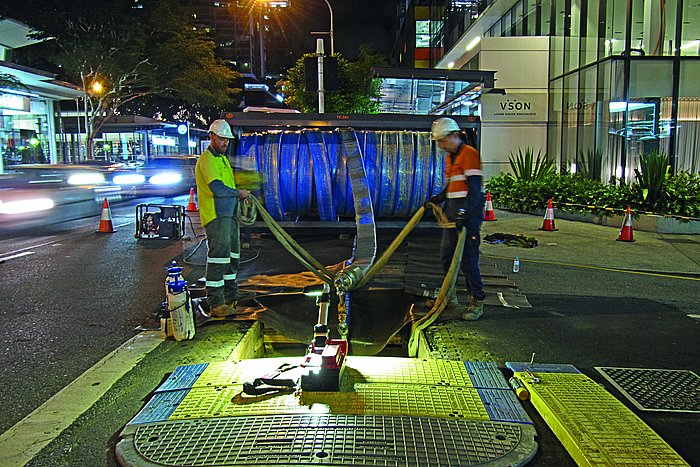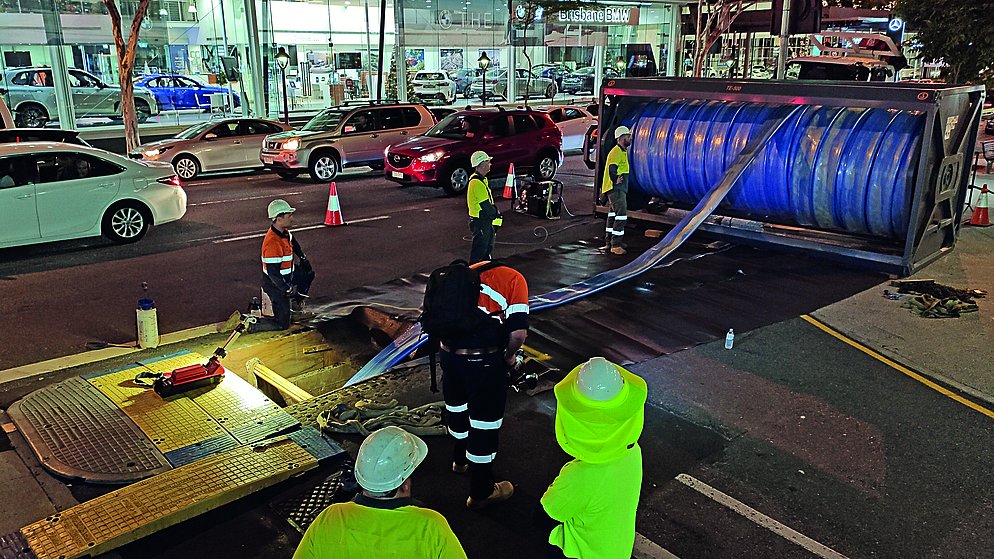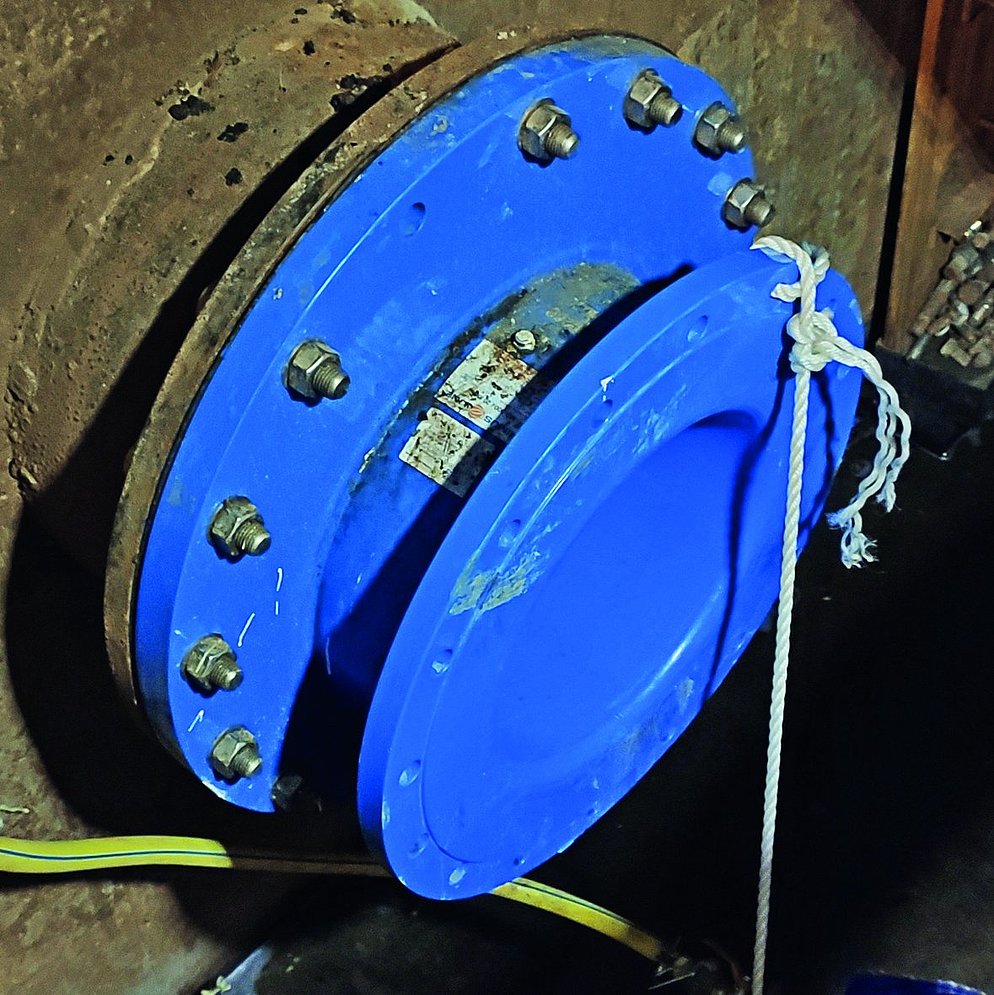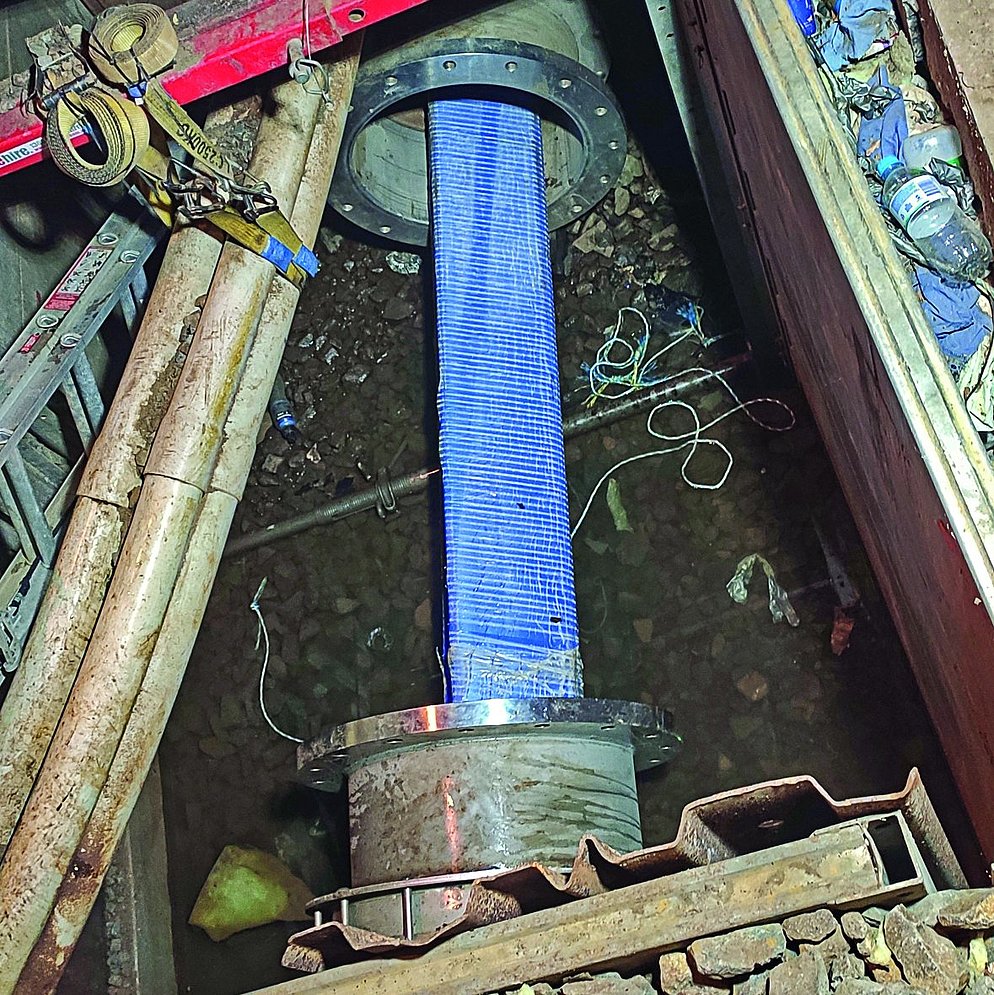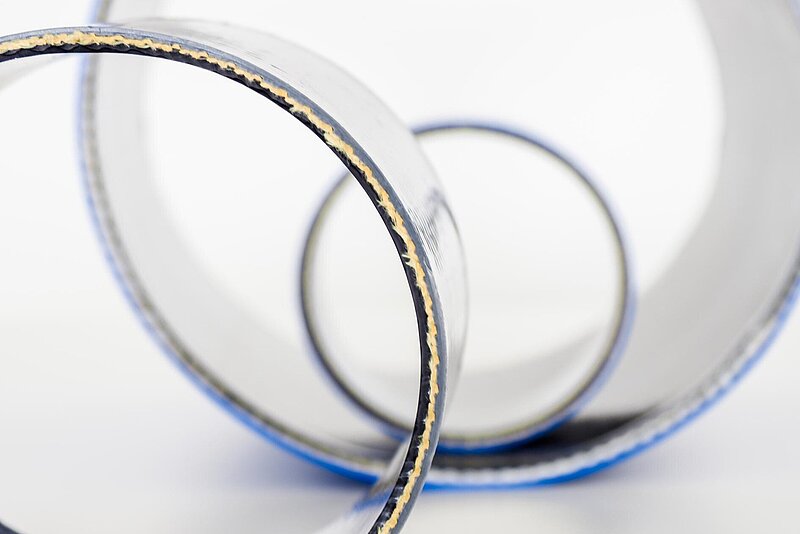One of Brisbane's oldest and most important drinking water pipes runs under Ann Street in the bustling business and nightlife district of Newstead and Fortitude Valley. Earlier this year, Urban Utilities completed a multi-million dollar rehabilitation project on this 130-year-old pipeline. With the use of the trenchless technology Primus Line®, the project is expected to extend the life of the pipeline by at least 50 years providing an economical solution with minimal impacts to traffic and nearby businesses and residents.
The Ann Street pipeline is a cement-lined, cast iron pipe, and helps to supply water to the city centre and the inner-city suburbs. During the morning and evening peak consumption periods, about 500 litres of water per second flow through the pipe.
Thousands of vehicles a day roll along the four-lane road, which is one of the busiest roads in Brisbane’s central business district. Many car dealerships, restaurants, hotels, offices, residential buildings and several bus stops line the traffic route.
As with many water utilities, replacing water mains in heavily congested urban environments can be a costly and disruptive process. In this case, trenchless technology was the key to success.
Trenchless technologies allow utilities to rehabilitate water pipes that are nearing the end of their service life and "turn back the clock". In this way, security of supply can be ensured for future generations while minimising disruption to existing residents, businesses and traffic – and with significantly less investment than conventional methods.
Given the location of the pipe, flexible lining solution Primus Line® was chosen as it could pass through several bends in the pipe and be installed using a few small pits, to minimise the traffic impact.
